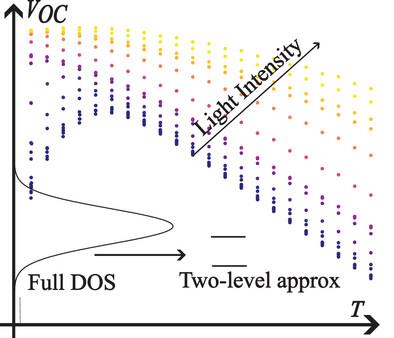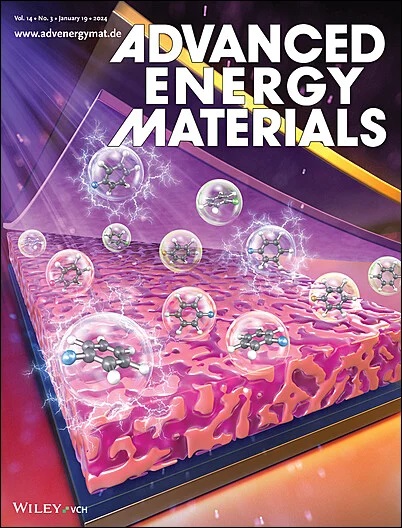Traps, Tail States and Their Consequences on the Open-circuit Voltage in Organic Solar Cells
IF 24.4
1区 材料科学
Q1 CHEMISTRY, PHYSICAL
引用次数: 0
Abstract
All that remains to reliably beat the 20% efficiency hurdle in organic solar cells are the relatively low open-circuit voltages (VOC). A still-needed step toward solving this problem is to shed light on the mechanisms behind these losses, and herein it is focused on understanding the roll-off of VOC at low temperatures, which has been linked to various detrimental processes. Here, a light intensity sweep is added to the temperature-dependent measurements and the resulting trends are compared with a kinetic analytical model that not only incorporates all previously suggested explanations for the temperature dependence of VOC, but, importantly, also includes carrier density contributions to the electron and hole mobilities by treating the density of states (DOS) of the active layer as a two-level system. It is found that this description is sufficient to quantitatively explain VOC roll-off in terms of charges getting trapped in intrinsic tail states of the Gaussian DOS without having to assume the presence of extrinsic traps.

有机太阳能电池中陷阱、尾态及其对开路电压的影响
要想突破有机太阳能电池20%的效率障碍,唯一可行的就是相对较低的开路电压(VOC)。解决这个问题的一个仍然需要的步骤是阐明这些损失背后的机制,在这里,它的重点是了解在低温下挥发性有机化合物的脱落,这与各种有害的过程有关。在这里,光强度扫描被添加到温度相关的测量中,并将结果趋势与动力学分析模型进行比较,动力学分析模型不仅包含了所有先前提出的VOC温度依赖的解释,而且重要的是,通过将活性层的态密度(DOS)处理为两级系统,还包括载流子密度对电子和空穴迁移率的贡献。我们发现,这种描述足以定量地解释VOC滚转的电荷被困在高斯DOS的内在尾部状态,而不必假设外部陷阱的存在。
本文章由计算机程序翻译,如有差异,请以英文原文为准。
求助全文
约1分钟内获得全文
求助全文
来源期刊

Advanced Energy Materials
CHEMISTRY, PHYSICAL-ENERGY & FUELS
CiteScore
41.90
自引率
4.00%
发文量
889
审稿时长
1.4 months
期刊介绍:
Established in 2011, Advanced Energy Materials is an international, interdisciplinary, English-language journal that focuses on materials used in energy harvesting, conversion, and storage. It is regarded as a top-quality journal alongside Advanced Materials, Advanced Functional Materials, and Small.
With a 2022 Impact Factor of 27.8, Advanced Energy Materials is considered a prime source for the best energy-related research. The journal covers a wide range of topics in energy-related research, including organic and inorganic photovoltaics, batteries and supercapacitors, fuel cells, hydrogen generation and storage, thermoelectrics, water splitting and photocatalysis, solar fuels and thermosolar power, magnetocalorics, and piezoelectronics.
The readership of Advanced Energy Materials includes materials scientists, chemists, physicists, and engineers in both academia and industry. The journal is indexed in various databases and collections, such as Advanced Technologies & Aerospace Database, FIZ Karlsruhe, INSPEC (IET), Science Citation Index Expanded, Technology Collection, and Web of Science, among others.
 求助内容:
求助内容: 应助结果提醒方式:
应助结果提醒方式:


